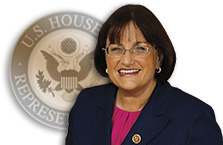Amber Robinson calls Head Start the best thing that could have happened for her children.
Her son and daughter were well prepared to start elementary school, thanks to the comprehensive preschool program.
Yet this year, there are 47 fewer children in the region who have that chance, after Southwestern Community Services, the Keene-based agency that oversees seven local Head Start programs, had to cut $130,000 from its budget.
Robinson was one of four parents on a committee that spent hours looking for money-saving options in an effort to disrupt as little of the program as possible. Those decisions, which included closing two classrooms and cutting five staff positions, were stressful and sad, she told U.S. Rep. Ann M. Kuster, D-N.H.
Kuster was in Keene Tuesday to hear how local Head State programs are faring with across-the-board federal budget cuts, called “sequestration,” that took effect in March. Head Start is a federal program that provides free preschool services to 3- to 5-year-olds from low-income families, and offers education, health, nutrition and social services.
Kuster called the sequestration a mindless way to reduce the size of the government and said Americans can’t become complacent and learn to live with the cuts. She wants to see elected officials find more specific, targeted ways to reduce federal spending.
Given the size and scope of the federal government, that’s not rocket science, she said. But it will require spending time looking for programs that are duplicated and cutting out wasteful spending, she said.
What the government shouldn’t do, though, is make cuts to vulnerable children who are in the most important developmental stage of their lives, she said. If so, their needs will only expand, she said.
“We can just predict that the outcome down the road will be a greater burden on public education and on the taxpayer,” she said.
Head Start is required to provide screenings to children to look for vision, hearing, behavioral or developmental issues, Head Start Program Director Bagdat Caglar said.
Southwestern closed one classroom each in Keene and Newport, meaning those offices will have less of a chance to identify children who need extra support, which delays delivery of support services at a time when early intervention is vital, Caglar said.
Plus, it’s really the entire family that enrolls in Head Start, not just children, said Ella Weber, family services and community partnership manager.
“They come to depend on us,” she said.
Southwestern has hired parents of Head Start children for positions throughout the agency, and parents learn how to advocate for their children, an important skill for future meetings with school faculty, Community Services Director Gail Merril said. Head Start also serves as a hub that introduces families to other services, such as housing help or the Women, Infants and Children (WIC) program.
Head Start’s $8 billion national budget has been reduced by more than $400 million due to the federal budget cuts, requiring 57,000 fewer spots for children and 18,000 staff cuts or reductions this year. New Hampshire programs cut services for 176 children, according to the national Office of Head Start.
The sequester is a product of a 2011 agreement that raised the debt ceiling in exchange for commitments to reduce federal spending. The widespread cuts were meant to be so severe they would encourage Congress to agree on a more balanced budget-reduction plan.
Caglar said the agency planned for the roughly 5 percent budget cut caused by sequestration, but she never believed it was actually going to happen, thinking instead that Congress would come up with a solution before the cuts went into effect March 1.
Now, the agency is facing a similar scenario. Federal spending was reduced by about $85 billion in the first round of sequestration. Unless Congress intervenes, though, the cuts are scheduled to continue until about $1.2 trillion is cut.
“The idea that we may be doing this again is frightening,” John Manning, Southwestern’s chief financial officer, said.
Kuster says she wants to make sure the country isn’t forced to make cuts on top of cuts.
She noted her participation in United Solutions, a bipartisan group of new members of Congress that aims to find common ground for cutting spending and spurring economic growth.
Part of the budget solution, Kuster said, is always paying attention to where federal money is going. For example, she helped introduce a bill in May to close federal bank accounts that the government had been paying fees on long after they were emptied.
There are plenty of similar sensible ways for the government to cut spending, Kuster said, citing her support of bills such as the Government Waste Reduction Act of 2013 and the Duplication Elimination Act of 2013, which are based off reports of federal spending from the Government Accountability Office. She also thinks the government could save money by reducing subsidies to large agriculture industries, such as soy and sugar.
On Tuesday, Kuster asked questions of Head Start staff and said she wanted to understand how sequestration was effecting New Hampshire families so she can take those stories back to Washington D.C., to try to stop further cuts.
That’s also what she promised a group of 3- and 4-year-olds in a classroom she toured on the first day of classes, saying she’ll fight to fill the empty classroom next door.
